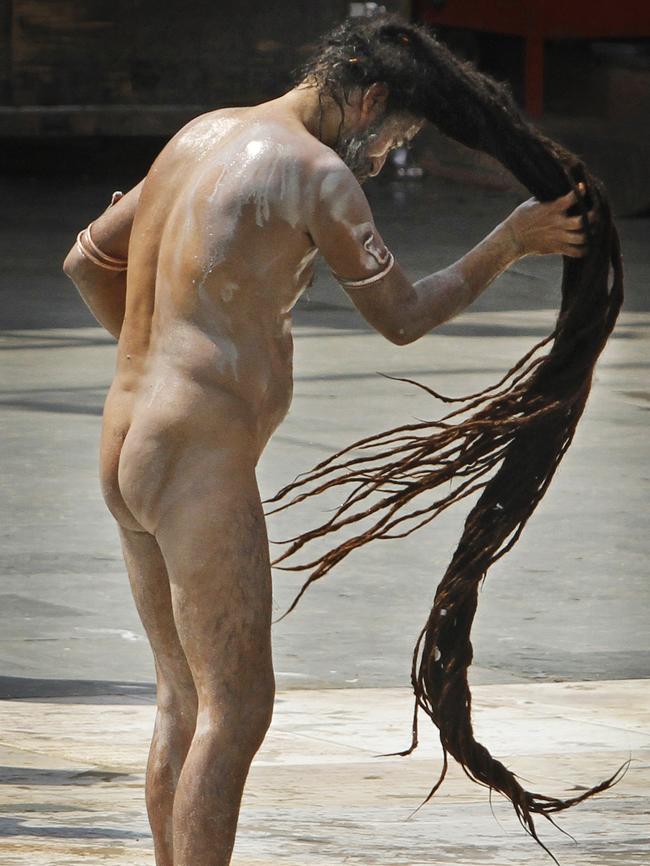Global hair industry untangled by Emma Tarlo
Political, religious and social forces are all at play in the billion-dollar trade in human hair.

In May 2004, the stench of burning sulphur filled the streets of Brooklyn. The nocturnal bonfires that were lit in New York and in other Orthodox Jewish communities around the world were made of human hair. Thousands of cherished and valuable wigs, some still attached to mannequins, were consumed by flames in what became known as Sheitel-gate.
The wig-burning would not only shake the foundations of ultra-Orthodox life, it would also have a profound impact on the billion-dollar trade in human hair. As Emma Tarlo documents so brilliantly in Entanglement: The Secret Lives of Hair, Sheitel-gate overturned complex channels of supply and manufacture of wigs worn by Orthodox married women that ran from India, Southeast Asia and China through to Israel, Europe and North America.
The trigger for the incendiary outburst was a directive given in Jerusalem by a 94-year-old Lithuanian Haredi rabbi, Yosef Shalom Elyashiv, who ruled that the use of Indian hair in sheitels (wigs) was prohibited. Elyashiv had appointed London-based rabbi Ahron Dunner to travel to the Indian state of Tamil Nadu to determine whether the practice of women tonsuring their hair as an act of ritual purification was the same as sacrificing it to the gods.

At the sacred Venkateswara Temple in Tirumala, Dunner interviewed Brahmin priests, Hindu barbers and devotees to determine whether tonsuring was a primitive form of idol worship and therefore forbidden by the Torah.
Despite the similarities between the Hindu tradition of tonsuring as an act of purification and the practice by strict Haredi women of shaving their heads before taking a ritual bath at the end of their menstrual cycle, Elyashiv decided on the basis of Dunner’s report that wigs made from temple cuttings were idolatrous. Because it was impossible to distinguish temple hair from other Indian hair, the wearing of all wigs from India was forbidden.
Hair is something most of us take for granted, as something to be pampered, permed or pruned. Once detached from our heads, however, it takes on a surprising life of its own, making its way around the world to other people’s heads in numerous guises.
Tarlo, a professor of anthropology at Goldsmiths, University of London, goes to the roots of the commodification of hair, from the collection of comb waste by traders in the gutters of India to internet sites such as BuyandSellHair.com, where stressing the ‘‘natural’’, ‘‘organic’’ and ‘‘virginal’’ qualities of a snipping can boost its value by hundreds of dollars.
Her book traces the past and present of a largely invisible yet lucrative and globalised trading system. Tarlo uses an ethnographer’s eye to analyse the religious, social, cultural and commercial forces that drive the industry. Yet her book reads like a travelogue as we follow her through the temple towns of India, the hair factories of China, the sorting sheds of Myanmar and the salons of Europe and Britain.
Along the way Tarlo drops in at the International Hair Show in Jackson, Mississippi, where Alligator Woman and Zebra Woman are competing for first place in the Fantasy Hair competition. In South India she meets third-generation hair trader Kishore Kumar, who wore a garment fashioned from human hair at his wedding. In London she visits a clinic that helps alopecia sufferers and cancer patients coping with hair loss.
As she veers between scarcity and abundance we learn the average number of hairs on a human scalp ranges from 90,000 to 150,000. Healthy hair grows from 12cm to 15cm annually, which means it take two to four years to produce marketable lengths.
In India many poor women can’t wait that long, preferring to sell their combings to scavengers, who onsell the hair to dealers, who export it to Myanmar. According to one estimate, a staggering 500,000 people are employed in Myanmar’s waste hair industry, painstakingly untangling and sorting the combings by hand before sending them to factories in China, where they are dyed and made into wigs.
‘‘Much of the hair procured for wigs and extensions on the market today is collected in bulk by chains of intermediaries in contexts where hair sellers and buyers occupy different social and economic worlds,’’ Tarlo writes. “By the time the hair reaches the marketplace it is usually anonymous and the processes by which it has been collected are effaced.’’
This is why, as Tarlo notes, Elyashiv’s ban on hair from India is, in practice, unenforceable.
The rabbi’s ban was just one of the numerous shocks the industry has endured. In the late 19th century, exports from China fell after rumours that hair was cut from murdered Manchurian bandits. The Chinese market took another hit in 1966 when the US banned hair from the communist country because of its repressive policies. The ban led to the demand for Indian hair skyrocketing, until the invention of a synthetic hair product known as Kanekalon sent global prices for natural hair crashing by up to 80 per cent.
There is little that escapes Tarlo’s scrutiny, including the Bee Gees evading Singapore’s infamous ban on long hair by wearing slip-ons and Andre Agassi’s angst at the beginning of every tennis match that the hairpiece he had used for years would fall on to the clay court.
By employing an anecdotal yet vigorously researched approach, Tarlo succeeds in untangling a knotty topic while keeping the reader engaged through 400-plus pages. The result is a fascinating and authoritative work.
John Zubrzycki is a journalist and author. His new book, The Mysterious Mr Jacob, will be published in April.
Entanglement: The Secret Lives of Hair
By Emma Tarlo
Oneworld, 320pp, $31.99 (HB)


